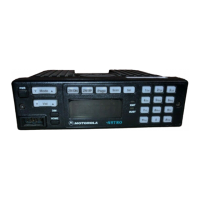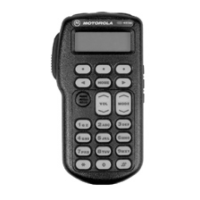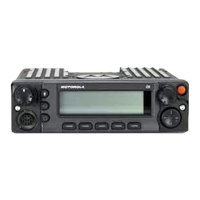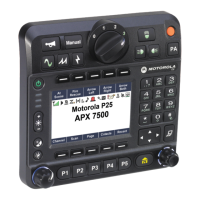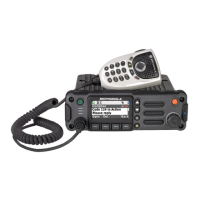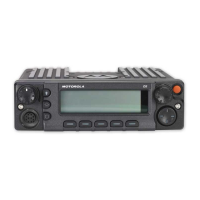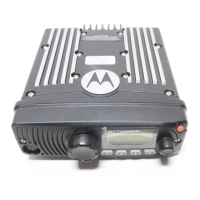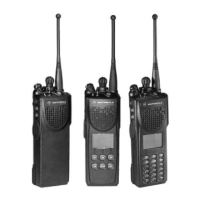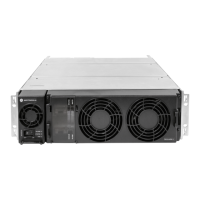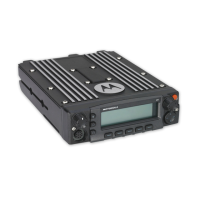6881076C25-E September 5, 2008
General Overview: Command Board 2-7
The VCO output is coupled to a transistor for amplification and for impedance buffering. The output
of this stage passes through a low-pass filter where the signal is split into three paths. One path
feeds back to the synthesizer prescaler; the other two provide injection for the RX and TX
amplification strings. The receive injection signal is further amplified and passed to the RX front-end
injection filter. The transmit signal goes to an analog divider, which divides the signal by two. The
signal is amplified and buffered and then injected into the transmitter’s low-level amplifier.
All transmit circuitry operates from keyed 9.4 V to conserve current drain while the radio is receiving.
A transistor/resistor network drives the PIN diodes in the VCO tank. These driver networks provide
forward bias current to turn diodes on and reverse the bias voltage to turn the diodes off. AUX 1 AND
AUX 2 lines control the PIN diode driver networks.
2.8.2 UHF and 800 MHz Radios
The voltage-controlled oscillator (VCO) assembly generates variable frequency output signals
controlled by the two steering lines. The negative steering line increases the tuning range of the
VCO, while the positive steering line affects the synthesizer control loop to incrementally change the
frequency.
The VCO generates a signal in the required frequency range. For UHF and 800 MHz radios, this
signal is fed to the doubler/buffer circuit which, in turn, doubles the VCO output frequency and
amplifies it to the power level required by the TX buffer and RX mixer. A PIN diode switch routes the
signal to the TX port when the keyed 9.4 V is high. Otherwise, the signal is routed to the RX port. The
synthesizer feedback is provided from the output of the doubler stage.
2.9 Command Board
The serial input/output IC provides command board functions including buffers for PTT, channel
active, squelch mute, busy, and data transmission, and logic functions for switched B+, emergency,
reset, and power control.
The regulator and power control circuits include an unswitched +5 V discrete circuit and the
regulator/power control IC, which produces both switched +5 V and 9.6 V. The unswitched +5 V
source is used as a reference for its switched +5 V source. Filtered unswitched +5 V is used for the
microcontrol circuits. Switched +5 V and 9.6 V are controlled by a digital transistor from the serial
input/output IC.The power control circuitry receives power set and limit inputs from the digital-to-
analog IC, and feedback from the RF power amplifier. Based on those inputs, the power control
circuitry produces a control voltage to maintain a constant RF power level to the antenna.
The reset circuits consist of the power-on reset, high/low battery voltage reset, and the external bus
system reset. The reset circuits allow the microcomputer to recover from an unstable situation; for
example, no battery on the radio, battery voltage too high or too low, and remote devices on the
external bus not communicating. Communication in RS-232 protocol is provided by an IC which
interfaces to the rear accessory connector (J2).
2.10 ASTRO Spectra Vocoder/Controller Board
The Vocoder/Controller (VOCON) board, located on the top side of the radio housing, contains a
microcontrol unit (MCU) with its flash memory, DSP, and DSP support ICs. The VOCON board
controls receive/transmit frequencies, the display, and various radio functions, using either direct
logic control or serial communication to external devices. The connector J801 provides interface
between the encryption module and the VOCON board for encrypting voice messages.
The VOCON board executes a stored program located in the FLASH ROM. Data is transferred to
and from memory by the microcontrol unit data bus. The memory location from which data is read, or
to which data is written, is selected by the address lines.
